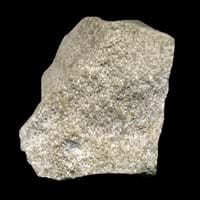Definition
Oolite is a sedimentary rock formed from ooids, spherical grains which are composed of concentric layers of calcite
Obsidian is a naturally occurring volcanic glass formed as an extrusive igneous rock. It is produced when felsic lava extruded from a volcano cools rapidly with minimum crystal growth
Discoverer
Unknown
Obsius
Etymology
From oo- + -lite, after German Oolit. A rock consisting of fine grains of carbonate of lime
From Latin obsidianus, misprint of Obsianus (lapis) (stone) of Obsius
Class
Sedimentary Rocks
Igneous Rocks
Sub-Class
Durable Rock, Medium Hardness Rock
Durable Rock, Medium Hardness Rock
Other Categories
Fine Grained Rock, Opaque Rock
Opaque Rock
Texture
Clastic or Non-Clastic
Glassy
Color
Black, Blue, Brown, Cream, Green, Grey, Pink, Red, Silver, White, Yellow
Black, Blue, Brown, Green, Orange, Red, Tan, Yellow
Durability
Durable
Durable
Scratch Resistant
Yes
Yes
Appearance
Rounded and Rough
Shiny
Interior Uses
Decorative Aggregates, Flooring, Interior Decoration
Decorative Aggregates, Interior Decoration
Exterior Uses
As Building Stone, As Facing Stone, Garden Decoration, Paving Stone
Garden Decoration
Other Architectural Uses
Not Yet Used
Not Yet Used
Construction Industry
Cement Manufacture, Cobblestones, Landscaping
Arrowheads, Cutting Tool, Knives, Scrapers, Spear Points
Medical Industry
Not Yet Used
Surgery
Antiquity Uses
Artifacts
Artifacts, Jewellery
Commercial Uses
Creating Artwork, Jewelry, Used in aquariums
Creating Artwork, Mirror, Used in aquariums
Types
Not Available
Fireworks Obsidian, Mahogany, Sheen Obsidian, Snowflake obsidian and Velvet Peacock Obsidian
Features
Available in lots of colors, Generally rough to touch, Very fine grained rock
Blocks negativity, Helps to protect against depression
Archaeological Significance
Monuments
Not Yet Used
Not Yet Used
Famous Monuments
Not Applicable
Not Applicable
Sculpture
Not Yet Used
Not Yet Used
Famous Sculptures
Not Applicable
Not Applicable
Figurines
Not Yet Used
Not Yet Used
Formation
Oolites form when layers of calcite are deposited around a sand grain or fossil piece and are rolled around in calm water, which makes them round.
When the lava is released from volcano, it undergoes a very rapid cooling which freezes the mechanisms of crystallization. The result is a volcanic glass with a uniform smooth texture.
Mineral Content
Calcite, Chert, Clay, Dolomite, Quartz, Sand, Silt
Not Available
Compound Content
Aluminium Oxide, Ca, NaCl, CaO, Iron(III) Oxide, FeO, MgO
Aluminium Oxide, CaO, Iron(III) Oxide, FeO, Potassium Oxide, MgO, MnO, Sodium Oxide, Phosphorus Pentoxide, Silicon Dioxide, Titanium Dioxide
Types of Metamorphism
Not Applicable
Burial Metamorphism, Cataclastic Metamorphism, Contact Metamorphism
Types of Weathering
Biological Weathering, Chemical Weathering, Mechanical Weathering
Biological Weathering, Chemical Weathering, Mechanical Weathering
Types of Erosion
Chemical Erosion, Coastal Erosion
Chemical Erosion, Coastal Erosion, Glacier Erosion
Grain Size
Fine Grained
Not Applicable
Fracture
Conchoidal
Conchoidal
Porosity
Less Porous
Very Less Porous
Luster
Pearly to Shiny
Vitreous
Compressive Strength
Not Available
Cleavage
Non-Existent
Non-Existent
Toughness
1
Not Available
Specific Gravity
Not Available
2.6-2.7
Transparency
Opaque
Translucent
Density
Not Available
2.6 g/cm3
Specific Heat Capacity
Not Available
Resistance
Heat Resistant, Wear Resistant
Heat Resistant, Impact Resistant
Deposits in Eastern Continents
Asia
Brunei, India, Indonesia, Malaysia, Singapore, Thailand, Vietnam
Afghanistan, Indonesia, Japan, Russia
Africa
Cameroon, Chad, Ghana, Kenya, Malawi, Sudan, Tanzania, Togo, Zambia, Zimbabwe
Kenya
Europe
United Kingdom
Greece, Hungary, Iceland, Italy, Turkey
Others
Not Yet Found
Not Yet Found
Deposits in Western Continents
North America
USA
Canada, Mexico, USA
South America
Colombia
Argentina, Chile, Ecuador, Peru
Deposits in Oceania Continent
Australia
Adelaide, New Zealand, Queensland, Tonga, Victoria, Yorke Peninsula
New Zealand
All about Oolite and Obsidian Properties
Know all about Oolite and Obsidian properties here. All properties of rocks are important as they define the type of rock and its application. Oolite belongs to Sedimentary Rocks while Obsidian belongs to Igneous Rocks.Texture of Oolite is Clastic or Non-Clastic whereas that of Obsidian is Glassy. Oolite appears Rounded and Rough and Obsidian appears Shiny. The luster of Oolite is pearly to shiny while that of Obsidian is vitreous. Oolite is available in black, blue, brown, cream, green, grey, pink, red, silver, white, yellow colors whereas Obsidian is available in black, blue, brown, green, orange, red, tan, yellow colors. The commercial uses of Oolite are creating artwork, jewelry, used in aquariums and that of Obsidian are creating artwork, mirror, used in aquariums.










